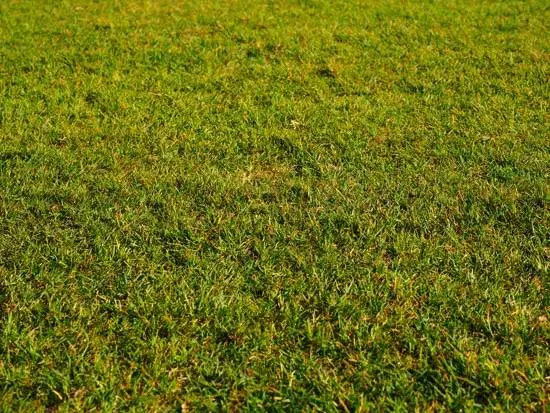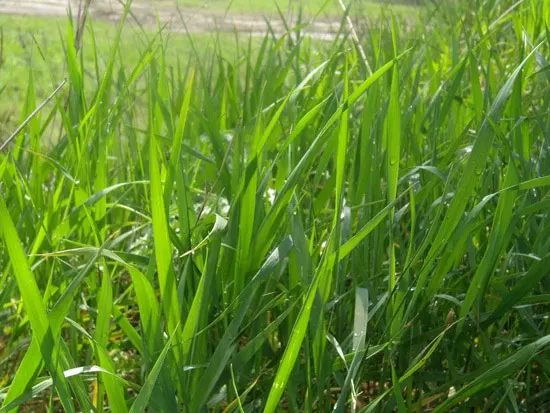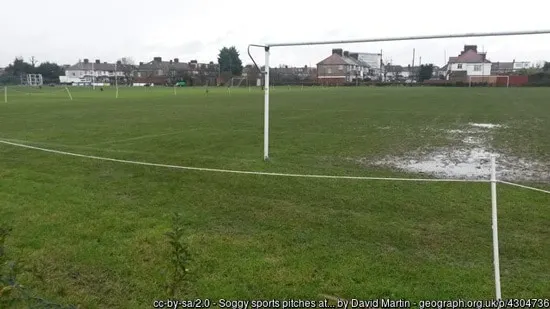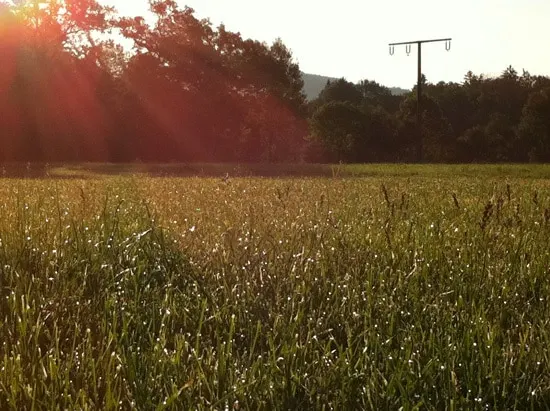Rains Are Welcome
Who does not love a spell of rain after a dry period? I have always enjoyed rains, but it annoyed me to watch my lawn get wet and soggy afterward. It would take 2 to 4 days for it to dry up.
In the meantime, we could not do anything in the garden. My dog was not allowed to go and play, and neither were we able to enjoy the outside. You can do nothing about the rains, but you can take some steps to ensure that the lawn does not get damaged.
Moreover, after a dry summer, heavy rains can allow you to revive and get your lawn back in shape. The important thing is to learn to take advantage of the rain.
The answer to the question, ‘how long does it take for grass to dry after rain’ is not simple and will depend on many factors.

What Happens After Rains
If it is only a light drizzle or even a steady shower after a dry spell, the lawn will benefit from the bounty. However, if it is a heavy downpour that continues for hours, then your lawn may take some time to recover. Any yard which is soaked for a long time can inflict a lot of damage.

The roots of the grass and other plants can suffocate and lead to rot. Just like humans, plants and trees cannot live without air. If any area is completely waterlogged, the roots are not able to receive oxygen.
Extremely wet conditions can limit or completely stop plant growth. It can also give rise to diseases and make the grass and plants weak.
How Long Does It Take For Grass To Dry After Rain?
Many factors determine the time it will take for the grass to dry.
- Duration of rain
- How heavy the rain is
- Weather conditions
- Location
- Type of soil
- Type of grass
There could be other factors at play like the incline and elevation, which can also affect the grass’s drying rate. Usually, it can take about 2 days for the grass to dry properly.
It would be best to have warm and windy weather for the drying process to take place. Drying out does not mean that the grass will be completely dry because the grass will retain some moisture, but there will be no wetness on the outer surface.
What Can You Do For Soggy Lawns?
Like we mentioned earlier, you cannot control how much and when it rains. There are a few things that you can try depending on your requirement.

- Create A Drainage Path: if you notice water pooling in specific areas of your garden, you must ensure proper drainage.
- This will fasten the drying process and also keep the grass healthier.
- Depending on the amount of rain you get, you can plan a permanent or temporary drain.
- Take Note of The Slope: with light rains, you will not face any problem unless the garden sits at the bottom and water from all around comes and settles there.
- You may have to make a retaining wall to stop this from happening.
- Prepare the Soil: even with light showers, if you notice pooling in areas and the lawn remains wet for a longer time, it is time to improve the soil drainage.
- Prepare the soil with gravel, sand, and even compost.
- Your goal has to be to create layers of materials that will allow water to move easily.
- Select the Right Seed & Sod: choosing the right type of grass will be helpful.
- Many of the sod varieties do well in sunny weather and sunny areas, but in shady areas, they can get very muddy with even light rains.
- Some grass like Fescue and Ryegrass are better suited to wet spots and are a better option.
- Rain Garden: if you can’t beat them, then join them!
- If rains are making your lawn wet, then rain gardens are a good way to turn it around.
- Place extensive drainage systems under the lawn or use the slope or create an inclined pathway for the water to collect in a pool.
- This whole system can be designed aesthetically to add to the beauty of your garden while drying it up faster.
Can You Mow the Wet Grass?

Do not attempt to mow wet grass as this encourages diseases and end up doing more harm. Wait until the water has soaked into the soil, and the grass is dry before you start mowing. Here are a few things to keep in mind. Watch this video for more information.
- Wait until the grass is completely dry before mowing; otherwise, you may face these issues.
- Compaction of grass
- Ruts in the soil
- Slipping and injuring yourself
- Short circuit with an electric mower
- When the grass is wet, stay off it. You may break the grass blades because it becomes weaker when it is wet.
- Try to aerate the lawn. Take the help of a professional to turn the soil. It creates small holes in the soil, which improves drainage and lets the air flow smoothly.
- Heavy rains can remove the nutrients from the soil which the grass needs. Fertilize the lawn and ensure that the grass gets the right amount of nutrition.
Conclusion
Preventing your lawn from the initial downpour is impossible. However, once the rain has fallen, you can take control. Water logging for extended periods can kill the grass.
It may take a couple of days for the grass to dry on average, and you can help by taking some of the steps we have mentioned here. By carefully assessing the lawn, you will get a clear idea about what is to be done to dry the grass faster.
Moreover, it will also prepare you for future rainy days. When it rains heavily, you have to be patient and wait it out. Don’t let the Rains dampen yours or your lawn’s spirits.
